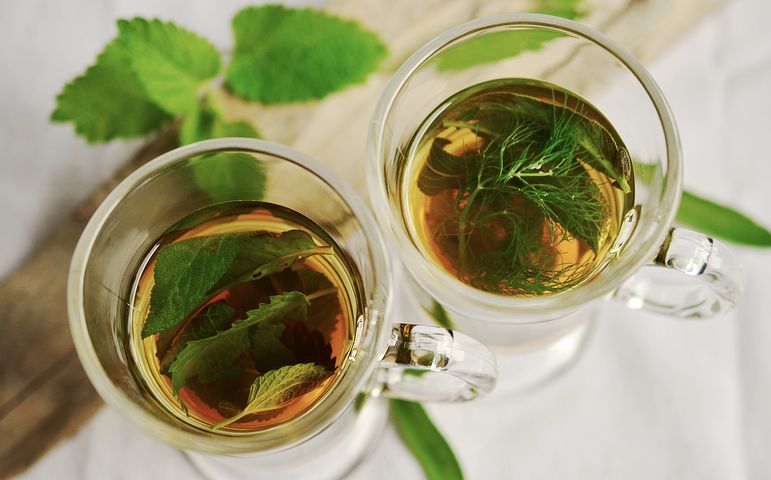
Intro to the Mint Plant (and the Top Mint Plant Uses)
Not all of us have a green thumb, but some plants are so ubiquitous that you can’t help but encounter them in everyday life. Mint is one of those plants. It’s probably in your toothpaste, or in a pot nearby as you walk down the street. There are a lot of reasons you might want to get to know this plant. Even if you’re a person who can’t tell the difference between a dandelion and daisy, you can still learn about mint plant uses – it’ll be sure to benefit you in one way or another.

Mint Plant Botany
Also known as Mentha, mint is of the Lamiaceae family. Somewhere between thirteen and eighteen species of mint exist, including bergamot mint, spearmint, pennyroyal, and peppermint. Part of what makes these species so hard to categorize is that there is a fair amount of natural hybridization. The species is distributed in regions across Africa, Asia, Europe, Australia, and North America. Mint is an aromatic, perennial herb. Most species grow best in wet, damp environments. The leaves grow in opposite pairs. Often, their edges are serrated or fuzzy. There is variety in coloring. Often, the best way to know if you are looking at a mint plant is to smell it. Its flowers range from white to purple.
As this plant grows in your garden, you can harvest the leaves at any time. Mint can make a good companion plant if kept under control.

Mint Taste and Digestion
Traditionally, people used mint to treat upset stomachs and chest pain. Today it is used to help alleviate nausea post-surgery. It is also used in aromatherapy as a smell that facilitates relaxation and cleanliness. With such an aromatic, fresh taste, the leaves and oil are also used to improve taste in culinary dishes, mouthwash, and toothpaste. It is a popular addition to lamb dishes in the middle east. It is popularly paired with chocolate as a treat.
For a refreshing summer salad, try chopping up some watermelon and cucumber into a bowl. Take fresh sprigs of mint and finely cut and mix them into the bowl.
Wondering why toothpaste is so often mint flavored? Menthol, which is derived from mint, is able to override the bitter tastes of the chemicals used to clean our teeth. Mint does help to fight germs and over time, society has come to associate the smell of mint with a clean mouth.
Some people do have allergies to mint, so be sure to ask when offering to share your mint-infused culinary creations with a friend.

A Healthy Garden
Mint is a great addition to the garden. It attracts beneficial pollinators like bees, wasps, hoverflies, and tachinid flies. The smell of this plant comes in handy once again in that its pungent presence can help repel house flies, squash bugs, mosquitoes, and mice. You can take clippings from the garden and place them in vases around your abode for a refreshing, bug-repelling effect.
Mint grows well in the shade, so it can be a good option if you need to prioritize the sunny spots of your yard, porch or window for more needy herbs and veggies. It can provide beneficial protection to other plants as well. Try planting your mint near squash, bell peppers, peas, and beets. Mint can help to repel bugs and it is also regarded as improving the flavor of the food as it grows.
An important note: if you are growing mint in your garden, strongly consider planting it in a container. Mint will likely take over any area where it grows. Many people consider it to be invasive. However, you plan to cultivate it, know that it will spread indefinitely.

Skin Care
Mint also has a cooling, anti-inflammatory effect. On a hot summer day, it can provide the sweet relief you need to continue to function well. You can make a paste of the leaves to ease burnt skin. You can use it to treat bug bites. It has strong antibacterial properties and can help to treat acne in some cases.
If you are not allergic to mint, try taking a handful of (washed) mint leaves, a slice of a cucumber and a half tablespoon of honey. Blend the ingredients together and then apply the paste to your face – and voila! You’ve got a fresh face mask. Leave it on for twenty minutes before rinsing it off with cool water. You can do this every week and reap the benefits of this helpful herb.

As you familiarize with mint plant uses, you can be creative with how you incorporate it into your daily routines in the kitchen and bathroom as well as how it can best benefit your gardening endeavors. Have you had success with growing mint in the past? What did you end up using it for? Any tips for how best to harvest it? We’d love to hear in the comments below.












